8 Best Grass Types for Raleigh, NC
BY EMALEY BAXTER | MAY 13TH, 2020 | LAWN CARE, NORTH CAROLINA, RALEIGHWhen it comes to grasses that will flourish in Raleigh, you have a lot to choose from. North Carolina is in what’s called the “transition zone,” an area sandwiched between the cold north and warm south. We need grasses that can handle both conditions. There are 8 best grass types for Raleigh that thrive in warm and cold.
Learn more about each grass type to help you decide which one is perfect for your property.
In this article, we’ll cover:
- Warm-Season vs. Cool-Season Grasses
- 8 Warm-Season and Cool-Season Grasses for Raleigh
- FAQ About Raleigh Grass Types
- Choosing Plant and Grass Varieties for Your Raleigh Landscape
Warm-Season vs. Cool-Season Grasses
Warm-Season
Warm-season grasses perform their best in the southern half of the U.S. and actively grow when the temperature is around 75 to 95 degrees Fahrenheit. These are drought-tolerant grasses that are mowed at a lower height in the summer.
Warm-season grasses grow best during hot North Carolina summers but will become dormant during the cold winter. For the best results, plant seeds in late spring and early summer.
Cool-Season
Cool-season grasses are more suited to northern climates with cold winters. These grasses are able to remain green through most of the year, even in cooler temperatures. They thrive when temperatures are between 55 and 75 degrees Fahrenheit.
Cool-season grasses should be seeded in late summer or early fall. Unlike warm-season grasses, they should be mowed at a taller height.
8 Warm-Season and Cool-Season Grasses for Raleigh
The following warm-season and cool-season grass types are perfectly suited for the climatic and soil conditions of Raleigh:
1. Bermudagrass
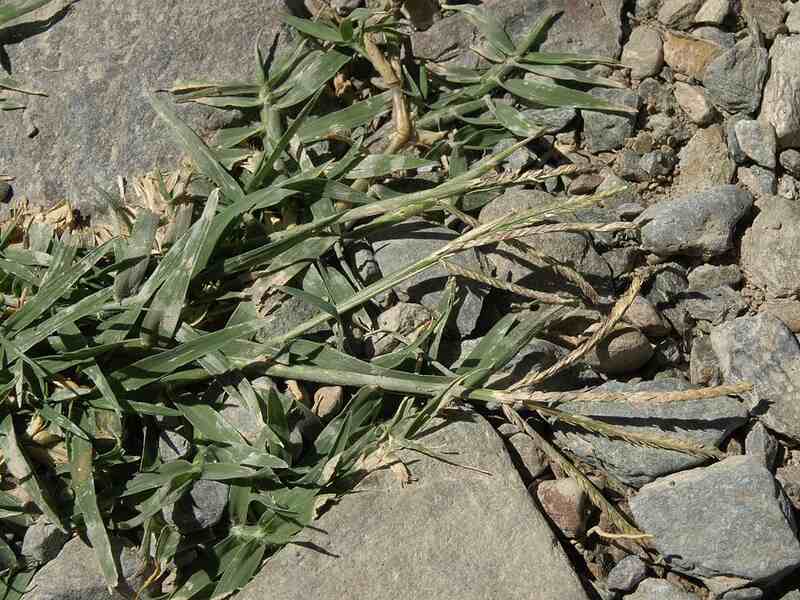
Bermudagrass is dense with a dark green color, and grows very quickly, which makes it great for any bare spots in your lawn. It’s one of the toughest grasses and will even out-compete weeds – however, it also will invade and take over your flower beds if you don’t keep an eye on it.
Bermudagrass can be seeded, but can also be planted with sods and plugs. It thrives in full sun and goes dormant in the winter once the temperature goes below 32 degrees Fahrenheit. Because of this, it will do best in lawns that get very little shade. If you have a significant number of trees that generate shade, then Bermudagrass will not work for you.
Bermudagrass is available in several different improved and hybrid varieties that are used for golf courses, lawns, parks, roadsides, and sports fields.
Classification: Warm-season grass
Spreads by: Stolons and rhizomes
Shade tolerance: Poor — needs full sun
Drought resistance: High
Foot traffic tolerance: High
Maintenance needs: Needs frequent mowing due to fast growth rate; develops thatch easily; needs regular fertilization
Mowing height: 1-2 inches
Potential for disease: Good resistance to disease, although diseases are common; low resistance to insects
Soil pH: 6-6.5
Soil type: Tolerates most soil types
Other notes: Bermuda spreads aggressively via its stolons (above-ground stems) and rhizomes (below-ground stems) and is able to outcompete many weeds. The downside is that it also can be a nuisance and is sometimes considered invasive. You’ll often find it has tunneled underground into flower beds and spread into neighboring lawns. Tolerant of most soil types.
2. Centipedegrass
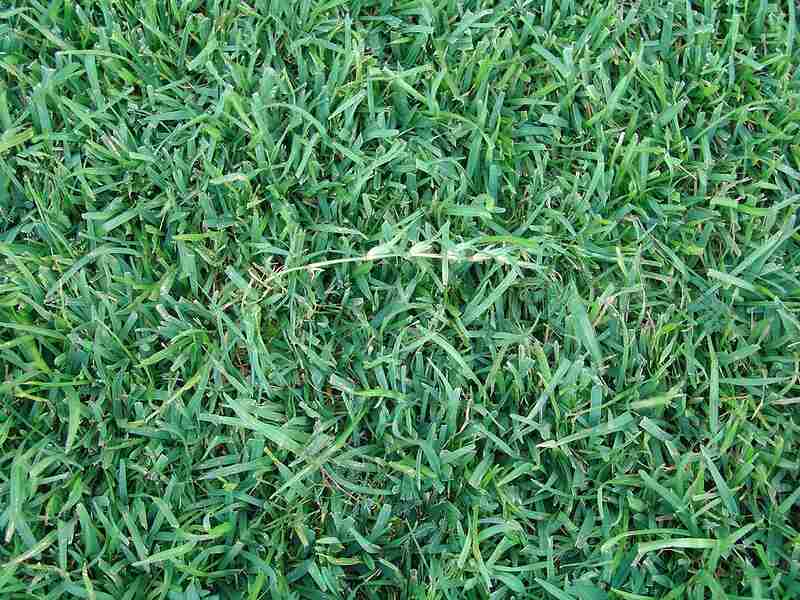
Centipedegrass is a popular choice in coastal areas since it adapts to infertile, acidic soils as well as salt and sand. It can only handle heavy clay soils if there is lots of drainage. This species of grass needs to be seeded regularly since it takes two or three years to fully mature and fill out your lawn. Once grown, it becomes granny-smith apple green with a dense, coarse texture.
Centipedegrass was initially used for low-maintenance cemeteries and eventually for lawns during and after the Great Depression. It is sometimes called “lazy man’s grass” or “poor man’s grass.” It has good shade and drought tolerance and can be spread by either seed or sod. Other varieties of centipedegrass have better cold tolerance and better performance in alkaline soils.
Classification: Warm-season grass
Spreads by: Stolons
Shade tolerance: Moderate — at least six hours of full sun per day
Drought resistance: Low to moderate
Foot traffic tolerance: Low
Maintenance needs: Low mowing frequency
Mowing height: 1.5-2 inches
Potential for disease: Good resistance to diseases and insects
Soil pH: 5-6
Soil type: Acidic, infertile, at least moderately good drainage (very dense, clay soils produce poor results)
Other notes: Low maintenance once established; greenish-yellow color (like a green apple) during the growing season; low fertilizer and mowing requirements; doesn’t tolerate heavy traffic; not a salt-tolerant grass
3. St. Augustinegrass
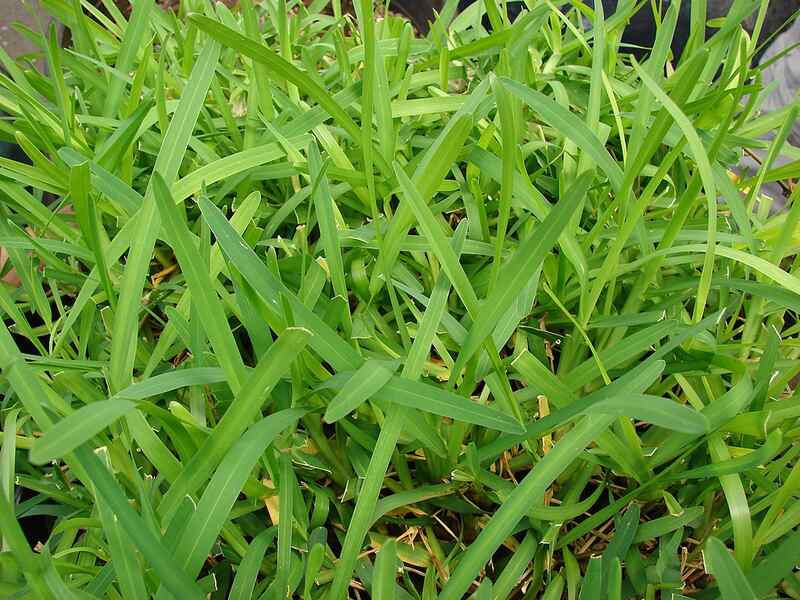
The Raleigh blend of St. Augustinegrass was developed and specifically adapted for the area by North Carolina State University in 1980 and has a higher cold tolerance than other blends. The most shade tolerant of warm-season grasses, Raleigh St. Augustine is a great choice for homes in heavily wooded areas.
St. Augustinegrass is a lush, fast-growing grass with a medium blue-green color. It works best in moist, warm climates with plenty of drainage and rich soil and is well-suited for North Carolina’s warm weather.
Classification: Warm-season grass
Spreads by: Stolons
Shade tolerance: Moderate shade tolerance, among the highest of any warm-season grass; some cultivars more shade tolerant than others
Drought resistance: Moderate
Foot traffic tolerance: Moderate
Maintenance needs: Moderate to high mowing frequency
Mowing height: 2.5-4 inches (mow dwarf varieties from 2.5-3 inches; standard cultivars from 3-4 inches; mow tall in shade)
Potential for disease: Moderate to high
Soil pH: 6-7.5
Soil type: Tolerates many soil types; prefers moderately fertile and moist (not waterlogged) soils; not a highly drought-tolerant grass; doesn’t tolerate soil compaction
Other notes: Native to coastal areas across the world and prefers moist soils and mild winters; will thrive in more inland areas provided growing conditions are met; good salt tolerance; will go dormant during winter in all but the southernmost regions
4. Zoysiagrass
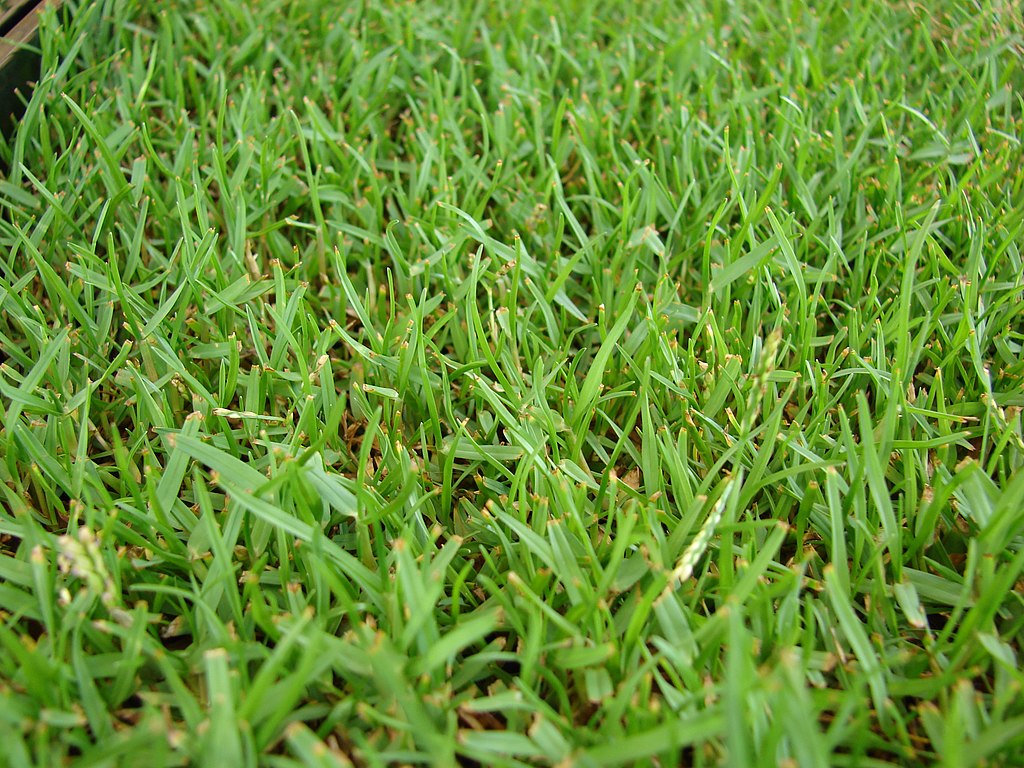
Zoysiagrass is a dense, lush grass that is light- to medium green. It is weather-resistant and low maintenance but will take a long time to establish. It does best in heat and full sun, and the speed of its growth depends on how much sun it receives. Zoysiagrass turns brown at the first fall and goes dormant throughout the winter.
It does not require frequent mowing and rarely needs irrigation, but it will become thatchy if not properly cared for. There are several species and cultivars of Zoysiagrass used in different aspects of landscaping, with some being fine-textured and others being coarse-textured.
Classification: Warm-season grass
Spreads by: Stolons and rhizomes
Shade tolerance: Tolerates light to moderate shade
Drought resistance: High
Foot traffic tolerance: High
Maintenance needs: Low to moderate nitrogen requirement; moderate mowing frequency
Mowing height: 1-2.5 inches
Potential for disease: Not prone to disease and insects; good disease tolerance overall
Soil pH: 6-6.5
Soil type: Well-draining, some cultivars more tolerant of a wide range of soils than others
Other notes: Moderately salt tolerant; cut with sharp mower blade; mow taller if grass is in partial shade
5. Fine Fescue
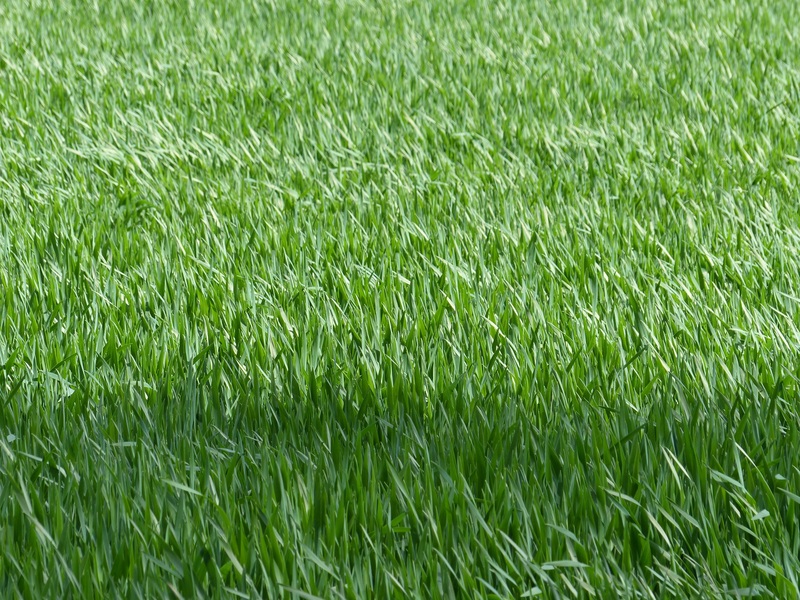
Fine fescues are known for their fine leaves. They tend to bunch and not spread out, so are often combined with Kentucky bluegrass and tall fescue. Fine fescue seeds establish quickly and are a deep green color with a fine texture that almost resembles pine needles.
This grass is drought resistant, cold tolerant, and does very well in poor soil conditions. It is the most shade-tolerant of all grass types and prefers rocky or sandy soil and clay. Full sun reduces fine fescue quality and results in thinning. Fine fescue is recommended for northern gardens and warm, shady areas.
Classification: Cool-season grass
Spreads by: Bunch-type grasses with one exception: creeping red fescues possess rhizomes
Shade tolerance: Moderate to high
Drought resistance: Moderate to high
Foot traffic tolerance: Low to moderate
Maintenance needs: Low mowing frequency
Mowing height: 1.5-3 inches
Potential for disease: Moderate
Soil pH: 5.5-6.5
Soil type: Good drainage is a must; tolerates infertile soils; sandy soils generally work well
Other notes: Often used in a mix with other cool-season grasses, especially in sun/shade mixes
6. Tall Fescue
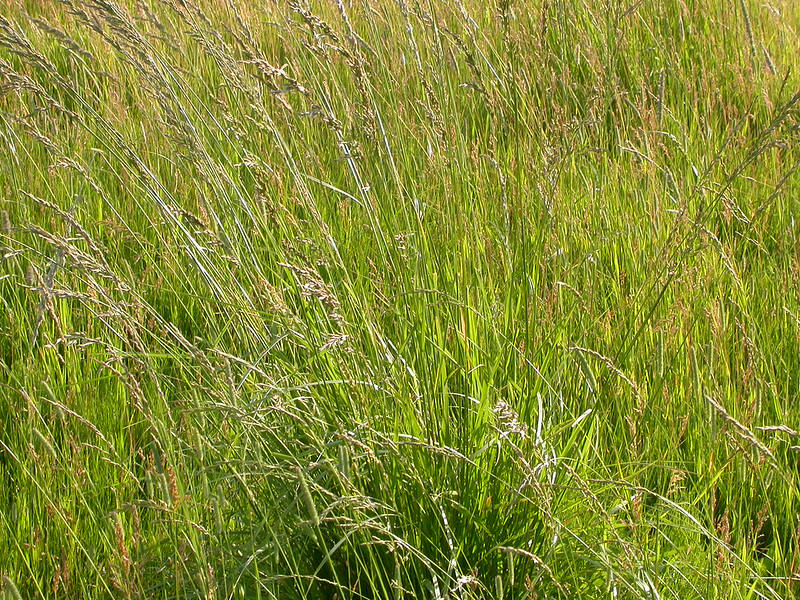
Tall fescue is perhaps the most popular cool-season grass in the upper piedmont area thanks to it remaining green during winter. Considered a reliable, low-maintenance grass, tall fescue is both tolerant to heat and resistant to cold. It thrives in full sun and partial shade, and because it can withstand heat and sudden dips in temperature, tall fescue works well for lawns in transition zones of the U.S.
Tall fescue often needs to be irrigated to remain attractive during the summer. It grows best on fertile, well-drained soil with a pH between 5.5 and 6.5 but can thrive in a wide range of soil conditions. It has a coarse texture, with a medium to dark green color and an extensive root system.
Classification: Cool-season grass
Spreads by: Bunch-type grass
Shade tolerance: Moderate
Drought resistance: Moderate
Foot traffic tolerance: Moderate, but low ability to recuperate from wear
Maintenance needs: Fast rate of growth, so plan to mow often
Mowing height: 2-4 inches (Check your cultivar and state recommendations. Many tall fescue lawns grow best when they’re mowed on the tall side.)
Potential for disease: Low to moderate under proper management conditions
Soil pH: 5.5-6.5
Soil type: Fertile, good drainage, but will tolerate a wider range of soil conditions
Other notes: Reseed every few years to repair bare spots and thinning; don’t plant old varieties such as Kentucky-31; look for “turf-type” tall fescue (TTTF). Seed blends with more than one TTTF cultivar give the best chance for a strong lawn.
7. Kentucky Bluegrass

As great as it would be to have a folk band serenading you in your yard, Kentucky bluegrass is actually a species of cool-season grass. Also, despite what the name suggests, it’s not blue, but dark green.
Confusing, we know. Apparently, when early Kentucky settlers looked out at the fields, the seed heads had a purplish, blue-green hue in the sun, hence the name.
Kentucky bluegrass (the plant) performs best when paired with tall fescue for a lush lawn that lasts throughout the year. It grows best in cool temperatures during the fall, winter, and spring, and its growth slows during the summer. Kentucky bluegrass tolerates some shade but prefers full sun.
Classification: Cool-season grass
Spreads by: Rhizomes
Shade tolerance: Low to moderate — prefers full sun
Drought resistance: Moderate, but will survive by going dormant
Foot traffic tolerance: Low to moderate, but recuperates well
Maintenance needs: Moderate mowing frequency; a high-maintenance grass
Mowing height: 2-3 inches
Potential for disease: Moderate to high
Soil pH: 6-7
Soil type: Good drainage, fertile
Other notes: Produces a dense lawn under ideal conditions; many of these traits (shade tolerance, drought resistance, etc.) vary widely by cultivar, with newer cultivars generally being hardier, more resistant to disease, etc.; mow taller in summer; most often mixed with other species, such as tall fescue, in home lawns
8. Perennial Ryegrass

Perennial ryegrass is the best grass for transition zone areas like Raleigh because it can withstand the warm season despite being a grass type for the cool season. Ryegrass is a thick, dense, dark green grass that can stand up to heavy foot traffic.
Ryegrass is resistant to pests and thrives in well-drained soil. Its roots establish quickly, and it has a long growing season, all of which make it one of the most popular cool-season grasses. Perennial ryegrass is often used for winter overseeding on golf courses, athletic fields, and home lawns to provide winter color in warm climates.
Classification: Cool-season grass
Spreads by: Bunch-type grass
Shade tolerance: Low — prefers full sun
Drought resistance: Low (summer dormancy in some areas)
Foot traffic tolerance: High, but poor recuperative ability
Maintenance needs: Moderate mowing requirement, depending on cutting height (lower cutting heights require more frequent mowing)
Mowing height: 2-3 inches
Potential for disease: High, especially in areas with hot, humid summers
Soil pH: 6-7
Soil type: Good drainage, high fertility
Other notes: Most often mixed with Kentucky bluegrass and fine fescue in a cool-season mix; well known for its excellent striping ability, low mowing tolerance (reel mower fans, this one’s for you), and rapid germination rate (four to seven days). Needs moderate levels of fertilizer.
FAQ About Raleigh Grass Types
The most commonly used grasses in North Carolina are warm season grasses like bermudagrass, Zoysiagrass, and centipedegrass.
Fine fescues are finely bladed grasses that are the softest and most lush grasses for bare feet.
Tall fescue thrives in sun or medium shade in the mountains and is the best for a green lawn year-round.
Bermudagrass is the best for Raleigh and regions of North Carolina with warm temperatures since it has a deep root system and provides resistance from heat, drought, and insects.
Choosing Plant and Grass Varieties for Your Raleigh Landscape
For homeowners in Raleigh, it can be tricky picking out the right grass for your lawn. But thankfully, your location makes your decision more flexible since you can safely house both cool-season and warm-season grasses.
If you want to learn more about how to care for your lawn for each season, you can check out our guide on spring and fall lawn care tips in Raleigh.
Looking for help from an experienced professional? You can keep your lawn looking lush and healthy with the help of Raleigh lawn care pros.
Main Photo by: Pxhere